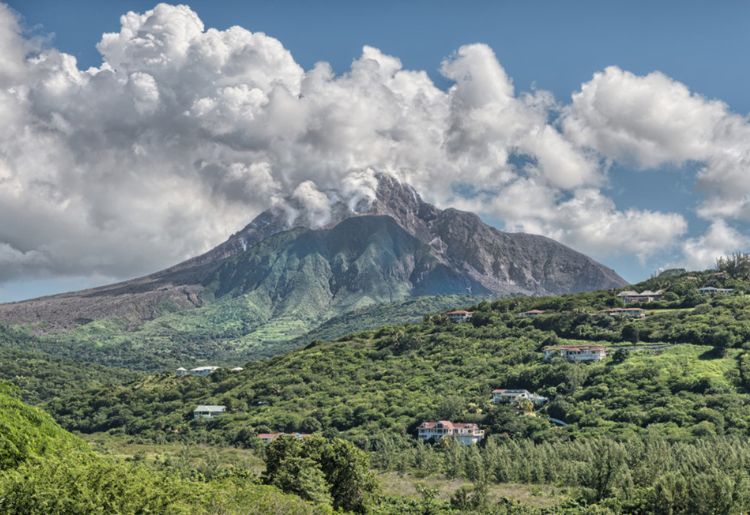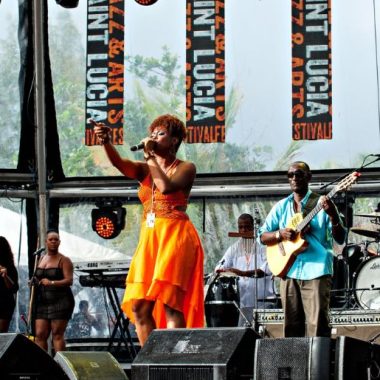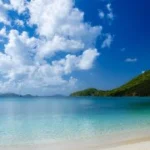Montserrat is one of the most unique destinations in the Caribbean. Many years ago, it was your typical island where locals and visitors could roam freely. However, in 1995, life on the island changed when the Soufriere volcano erupted. Residents left the south and relocated to the north of the island, other Caribbean countries, the United Kingdom and North America.
As a result of nature’s changes in Montserrat, most of the activity on the island takes place in the north of the island. Celebrations are more meaningful, especially since the people survived a tough and life-changing event. Additionally, the island is now an alternative tourism and eco-tourism hub with activities that utilise the island’s natural resources.
Epic Trailside Views in Montserrat
On bike tours throughout Montserrat, cyclists are rewarded with fascinating sights throughout the island. There are views of the ocean, lush tropical landscapes, deserted plantations, and empty villages. Tour guides are recommended for exploration excursions which include points of interest along the coastline and in the interior.
Here are some of the most memorable and epic trailside views in Montserrat to visit on your cycling tour:
1. The Soufriere Hills Volcano
The Soufriere Hills Volcano in Montserrat has been active since 1995. Although it does not have large, violent eruptions, there are frequent rumblings and gases, and debris are expelled from it. Soufriere is a composite volcano, which means that it has dome building eruptions. Prior to 1995, the last major eruption is believed to have been about 400 years prior. The volcano is consistently monitored by scientists at the Montserrat Volcano Observatory (MVO). Because of safety regulations put in place by the Montserrat government, you cannot get too close. However, you can get close enough to prime vantage points which provide nice views of the summit.
2. Lime Kiln Bay
Another spot for epic trailside views in Montserrat is Lime Kiln Bay. It is a small, but beautiful black sand beach with clear and calm water. For cyclists, it is a beautiful stop on a round-the-island ride. And, for soft adventurers it is ideal for swimming, snorkelling and scuba diving. Because the beach is on the west coast of Montserrat, the waters are calm. The beach has some facilities such as benches under the trees and a public shower. However, there are no changing rooms or eateries. There are a few hotels and villas in the area, but they are at least 15 minutes’ walk away.
3. Plymouth
When the Soufriere Hills Volcano erupted in 1995 and again in 1997, it resulted in a mass exodus of people from the island’s capital city, Plymouth. When the dust settled, the once bustling Plymouth became a ghost town. It is the only place in the Americas, that has been buried by volcanic ash, volcanic rock, pyroclastic flows, and debris. There are no people, no animals, no birds, no cars, no activities – just silence. As a result, Plymouth is now a tourist attraction with abandoned structures and greenery. When visiting Plymouth, ensure that you are accompanied by a registered tour guide.
4. Little Bay
Another black sand gem, Foxes Bay, is one of the most beautiful beaches in Montserrat. Foxes Bay is located in the southwest of the island and is a picturesque and peaceful spot that is ideal for simply enjoying nature. Unlike other beaches in the island, it is deserted and eerily quiet. This is because of its close proximity to the Soufriere Hills Volcano exclusion zone. The beach area is long and has views of Plymouth and Old Towne. The beach does not have much activity because there are no beach facilities or eateries. However, it is a good spot for picnics, large excursions, or photography sessions. For cyclists exploring the area, Foxes Bay is accessible via Belham Valley Road.
5. Centre Hills
Centre Hills is a tropical rainforest that is home to several species of birds, reptiles, and animals. The forest reserve, which is one of the island’s important birding areas, is an ecological gem that is protected by law. Centre Hills can be found in the northern half of Montserrat and is a large area that includes lowlands and highlands that rise to more than 700 metres above sea level. Since the Soufriere Hills volcano erupted, the hills have become a precious sanctuary for nature. The hills are home to birds such as the national bird – the Montserrat oriole, as well as thrashers, caribs, quail doves, thrushes, bullfinches, hummingbirds, and tremblers; and reptiles such as mountain chickens and galliwasps.
One of the beautiful things about the island is that explorations can be done on foot, by bike or by vehicle. But, no matter which mode of transportation you choose, you will be treated to the best views of Montserrat.

Further Reading
For more information about Montserrat, visit the following links:
Montserrat National Trust: Official Website
National Geographic: Seven things to do on the Caribbean island of Montserrat
iExplore: Montserrat — Things to Do
Travellers Point: Montserrat
Caribbean Tourism Authority (UK): Montserrat
Travel + Leisure: This Stunning Island Is Called the ‘Emerald Isle of the Caribbean
Caribbean & Co.: Montserrat Travel Guide
Image: The Montserrat Tourism Division










